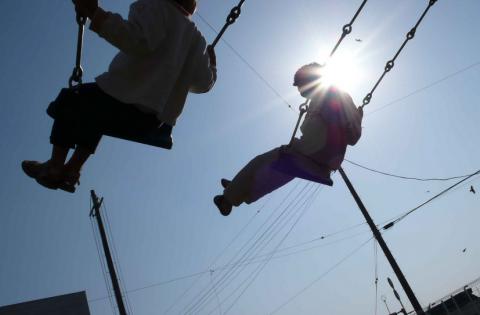Children's rights amendment offers feeble protection from abuse and neglect

We are being asked to vote on a defective constitutional proposal that extends weak protection to our children from abuse and neglect. By Vincent Browne.
There is a straightforward question to be asked about the proposed constitutional amendment concerning children. It is: why does it not include the oft-quoted and approved aspiration of the 1916 Proclamation: “cherishing all the children of the nation equally”?
Of course the reference to “children” in that case was to all the citizens of the State, adults included, but at the outset of the deliberations on this amendment Bertie Ahern in 2006 promised that this objective would be part of an amendment.
So what happened? Instead, we are asked to vote on an amendment that offers feeble protection for children from abuse and neglect and nothing at all about cherishing the children of the nation equally. Not that the amendment does not improve prospects for some children, but it does so at a cost of deferring prospects of real change for children, perhaps for generations.
The first bit of the proposed amendment – “The State recognises and affirms the natural and imprescriptible rights of all children and shall, as far as practicable, by its laws protect and vindicate those rights” – is just a piece of decoration, for this is implicit in the Constitution as it stands.
The next bit permits the State to intervene by “proportionate means” where parents (whether married or not) fail in their duty towards their children to “such extent that the safety or welfare of any of their children is likely to be prejudicially affected”. This is a modest change from the present constitutional provision, which says the State may intervene only where the parents “for physical or moral reasons” fail in their duty to their children.
Is it contended that where the parents “for physical or moral reasons” fail in their duty to their children this would not encompass circumstances where the safety of the children were at risk? And if, as most people agree, there is a moral obligation on parents to provide for the safety and welfare of their children, what is the point of this part of the amendment?
There is a further part to this second bit which provides for the adoption of a child where the married parents have failed in their duty towards the child and where the best interests of the child requires the adoption – this is the bit that makes a difference, as does the bit which allows for the voluntary placement for adoption of a child by parents, even when these parents are married.
A further bit about children’s voices being heard is also fine but there was nothing to stop this happening anyway. A final bit which provides that in all legal proceedings concerning children “the best interests of the child shall be the paramount consideration”, is fine but raises the question about how the best interests of the child might be perceived.
In this column last week I referred to a Supreme Court judgment in what is known as the Baby Ann case, by the now retired judge Hugh Geoghegan, in which it was held that the paramount interests of the child, even independently of the existing constitutional provisions, was to be with her/his birth parents, even when the burden of psychological evidence suggested otherwise.
I was mistaken in the view that his was the only judgment in the case, but having read the three other judgments (by Adrian Hardiman, Niall Fennelly and Catherine McGuinness), the point, although less clear, still stands.
Baby Ann was born to two university students, who, at the time of the birth were not married to each other. The child was given up for adoption but, before the adoption could be completed, the students had married each other and demanded the return of the child who was 2½ years old by the time of the Supreme Court case. The weight of psychological evidence was that Baby Ann would be psychologically scarred, perhaps for a long time, by being removed from the custody of the would-be adopted parents, with whom she had bonded closely.
Some of the judges seemed to diminish the significance of the psychological evidence, substituting their own intuitions about the welfare of children. One of them, for instance, in arguing for the appropriateness of natural parents in the rearing of children, found corroboration in the bizarre biblical story of Solomon, who supposedly correctly identified the natural mother via a contrivance that even biblical fundamentalists must consider gross – proposing to cut the child in half.
In the case, a majority of the judges found that because of the present constitutional provisions on the family, the child should be returned to the natural parents.
This was irrespective of the trauma this would cause the child, both at the time of the return and, possibly, for the rest of her life. Indeed, one of the judges, Catherine McGuinness, said it was “with reluctance and some regret” that she had arrived at her judgment, but it had be decided “under the Constitution and the law as it now stands”.
Two of the four judgments, however, suggested a reasoning that supported the return of the child anyway, independently of any constitutional imperative.
But the main deficiency of the proposed amendment is the failure to guarantee the cherishing of the children of the nation equally and the absence of any requirement on the State to protect children from an epidemic of sexual abuse that there is no reason to suppose has ceased to rage.
Image top: robertodevido.
